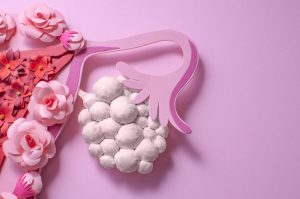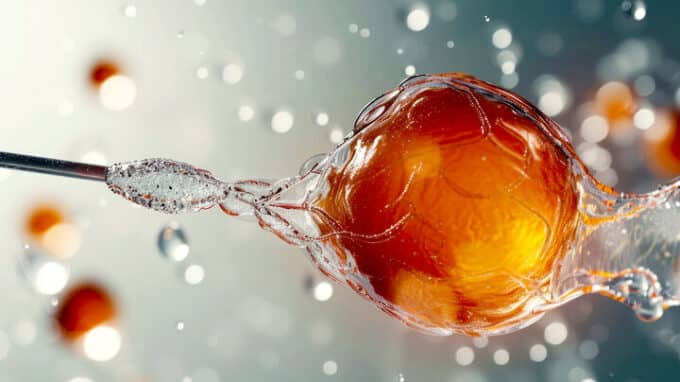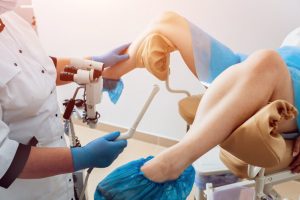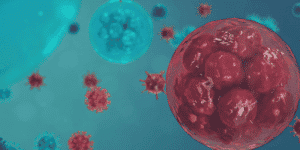A research scientist at the Mechanobiology Institute (MBI) at the National University of Singapore (NUS) and the NUS Bia-Echo Asia Centre for Reproductive Longevity and Equality (ACRLE) at the NUS Yong Loo Lin School of Medicine (NUS Medicine), has developed an innovative technique to significantly boost the reproductive potential of aged oocytes, or immature eggs, potentially paving the way for improved outcomes of assisted reproductive technologies such as in vitro fertilization (IVF) for older women.
The team demonstrated oocyte rejuvenation from an aged preclinical model by utilizing a young follicular environment to partially restore their reproductive function, creating a better quality egg for IVF. The novel approach and findings on the effects of follicular environment on oocytes were published in Nature Aging.
Oocytes From an Aged Follicular Environment Can be Rejuvenated by Transplantation into a Young Follicular Environment
Aging of the female reproductive organs is a natural process associated with changes in a woman’s reproductive system over time, including a large decline in the quantity and quality of oocytes. As many women choose to have children late in life, understanding and mitigating the effects of aging on egg quality is essential to developing strategies for successful egg maturation, fertilization, and embryo development.

A team of researchers led by Professor Rong LI, Director of the MBI, and Dr. WANG Haiyang, Senior Research Fellow at the MBI, as well as IVF scientists and clinicians from NUS Medicine and ACRLE, has been at the forefront of efforts to understand the mechanisms behind the aging of female reproductive organs. They have constructed and used hybrid ovarian follicles extracted from a preclinical model to provide direct evidence that an aged follicular environment could impair the quality and developmental potential of young oocytes. More importantly, the team was able to demonstrate that an oocyte from an aged follicular environment could be rejuvenated by grafting it into a young follicular environment.
The inspiration for this research came from the growing need to address age-related fertility issues. It is extremely curious that the female reproductive system, particularly the follicles that contain eggs, appear to be the fastest-aging system in the human body. This fact has prompted researchers to take a closer look at this aging process in order to better understand it and find ways to mitigate it.
Research Can Increase the Success of Embryonic Development After IVF, and Lead to a Live Birth Rate That is About Three Times Higher
An ovarian follicle is a fundamental functional unit in the mammalian ovary, consisting of somatic cells (granulosa cells) that surround and support an oocyte (an immature egg) as it grows and matures prior to ovulation. The granulosa cells communicate with the oocyte to provide essential nutrients and components via channels known as transzonal projections. In return, the oocyte provides key components that signal granulosa cell growth and development.
MBI researchers used this understanding of the relationship between the ovarian follicle’s somatic cells and the egg to create hybrid ovarian follicles using an ex vivo 3D culture platform, building on previous methods. The team then extracted the oocyte from its native follicular environment and transplanted it into a new follicular environment that had had its own oocyte removed to construct the hybrid ovarian follicle.
First, the researchers confirmed that aged granulosa cells, compared to young granulosa cells, have an increase in hallmarks of aging, such as an increase in indicators of DNA damage and other factors associated with programmed cell death. They showed that this aged follicular environment can reduce the quality and developmental potential of a young egg. The research team then created hybrid ovarian follicles that contained an aged oocyte (i.e., an immature egg from an aged follicle environment) in a young follicle environment. The researchers were able to demonstrate that the quality and developmental competence of the aged oocyte could be significantly, though not completely, restored by “nurturing” it in a young follicle environment. The team found that the restoration of the aged oocyte‘s quality was due to the remodeling of its metabolism and gene expression.
The researchers discovered that the young granulosa cells, which were much better able to establish transzonal projections towards the aged oocyte, helped to facilitate this restoration. In addition, there was an improvement in the function and health of the oocyte mitochondria, which are crucial for energy production and cell metabolism. The team also provided evidence that the young follicular environment can support a much more precise division of the egg genome, which must occur properly during egg maturation to prevent aneuploidy – the presence of an abnormal number of chromosomes in a cell or organism. All these improvements increase the success of embryo development after IVF and result in a live birth rate about three times higher than aged oocytes that have not been exposed to the young follicular environment. The NUS team has filed a patent for this innovation, particularly for the method of rejuvenating aged oocytes by exposure to a young follicular microenvironment.
Improving Egg Quality
“The results of this study provide a proof of concept and the basis for developing non-invasive cell-based strategies to improve the quality of eggs from older women or women whose reproductive capacity is compromised by other health issues, which could lead to better outcomes in assisted reproductive technologies such as IVF,” said Dr. Wang.
The researchers hope to realize the potential application of their breakthrough discovery by conducting more thorough studies to understand how the young follicle environment can improve the quality of an aged egg, validate the key findings of this study in human cells and eggs, and develop an optimized follicle cell line that can be used to improve egg quality for better IVF outcomes.





